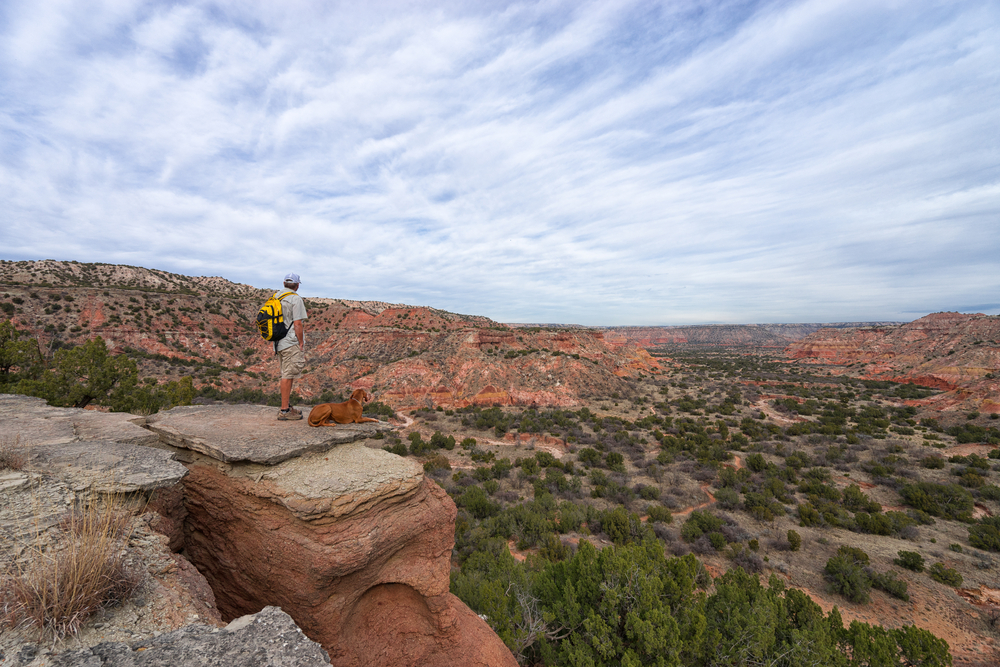A hike along the park’s trails will bring you face-to-face with the true beauty and wonder of the Palo Duro Canyon. Soaring rock formations and numerous plant and wildlife species will leave you in awe of both the canyon’s utter vastness and hidden wonders.

Large rock formations, called “hoodoos,” form when layers of rock wear away at varying rates. These unmistakable configurations have what looks like a larger rock precariously balanced on a narrow base. Hoodoos form when the softer rock of the base erodes and then the harder rock at the top protects the softer rock under it from further erosion.
With its diverse habitats, Palo Duro Canyon provides a home for many species of wildlife. The Texas horned lizard and Palo Duro mouse, both on the Threatened Species list, both thrive in the canyon. Other wildlife species include whitetail and mule deer, wild turkeys, bobcats, coyotes, and several kinds of lizards and snakes.
The varied habitat the canyon offers makes it a perfect area for bird watching and there is a bird blind behind the Trading Post where you can observe several species. A few of the more prominent varieties of birds include the roadrunner and Golden-fronted woodpeckers which can be seen year-round. You can find lark sparrows and western meadowlarks in the grasslands on the canyon rim. Painted buntings, Mississippi kites, and Bullock’s orioles arrive in the spring.
Some of the members of the official Texas State Longhorn Herd still live free in the park and can be seen on the rim near the park’s headquarters. Spanish settlers brought cattle to the area in the 1500s and many of the cows escaped captivity, establishing a wild population. Descendants of the escapees, named “longhorns” for their wide sweeping horns, roamed freely in Texas for two centuries. Later, early Mexican and European settlers rounded up and domesticated the wild cows. As the hardy animals were able to survive on the area’s poor-quality pastureland, the captive herds grew rapidly.
The rim of the canyon is predominantly shortgrass prairie, whereas the bottom of the canyon, being in the river’s flood plain, supports a wider variety of plant types.
Wildflowers and grasses are scattered across the canyon walls and floor. Common plant species include American basket-flower, blackfoot daisy, Indian blanket, paperflower, buffalograss, prickly-pear cactus, sand sage, sideoats grama, sunflower, tansy aster, and yucca. Common trees include hackberry, juniper, mesquite, cottonwood, western soapberry, and willow.
For more information, visit The Texas State Park page here.
Palo Duro Canyon Trail Maps can be found here.